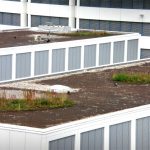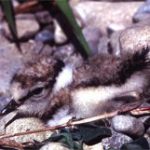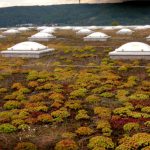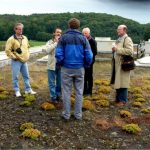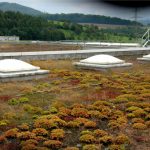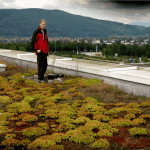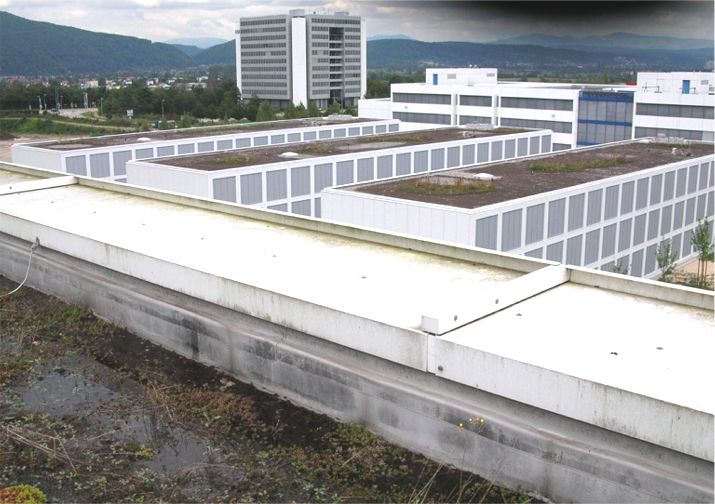
Additional Resources
For additional info, please contact Nathalie Baumann, Dipl. BioGeografin, email: n.baumann@hsw.ch., Hochschule Waedenswil FA Umwelt und Naturliche Ressourcen, FACHSTELLE DACHBEGRUENUNG, Gruental, Postfach 335, CH- 8820 Waedenswil
The entire corporate campus of Hoffmann-La Roche is a nature conservtion area and contains award winning designs for many of its landscaped areas. In addition to these three research “modular buildings,” there also exists a large extensive mostly sedum greenroof (1994 and area not accounted for here) currently about to undergo renovation, and six small intensive courtyard greenroofs constructed over office space designed by prominent Basil garden designers and landscape architects (area not accounted for here). The design and arrangement of the three research greenroofs were the result of a research project entitled “Ground-nesting birds on green roofs – A study of the possible uses by ground-nesting species and decisive construction and site conditions” by Nathalie Baumann. The buildings are located adjacent to the Ernst Frey AG gravel pits, which will be built over within the next few years – yet discovery of nesting from the River Plover, a nationally-protected breeding bird species, prompted planning and corollary studies to provide conservation with appropriate cost-effective measures. The roof surfaces of these modular buildings were thus explored as an effective habitat replacement.Research established that ground-nesting birds (e.g. the River Plover) also breed on gravel-ballasted, ungreened roof surfaces. Evidently size and type of gravel, which must blend with egg coloration and/or protective mimicry of fledglings, are the major criteria for breeding. Even if a contradiction to the greening of roof surfaces lies therein, the main question studied aimed to determine a meaningful design (appropriate substrate beside greened sections) to promote successful breeding and upbringing.
In March 2005, research roofs of 700 m? each were then installed on the three buildings, directly adjoining the present River Plover gravel pit habitat, to study the functionality of new design possibilities using different substrates and varying topography and vegetation. This occurred in conjunction with background research on the habitat requirements of ground-nesting birds (the ecology of these species) such that the feasibility for establishment and the chances of finding breeding evidence could be studied.The substrate consists of 5 cm sandy cement gravel (0-50mm) over varying depths (2-8 cm) of “Ricoter Roofgarden Intensive Soil.” The roofs were seeded with a “Basler Mix” and the addition of gravel; it was determined that a mix of open areas and vegetation gaps is an ideal environment for the River Plover.
 Greenroofs.comConnecting the Planet + Living Architecture
Greenroofs.comConnecting the Planet + Living Architecture
